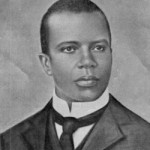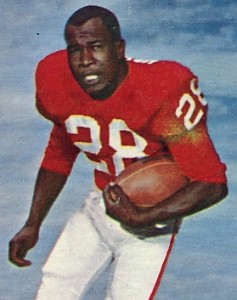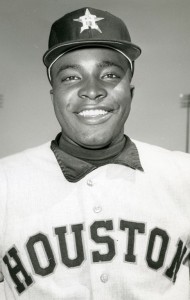Restoring Black Cowboys to the Range
At the Black Cowboy Museum in a storefront near Houston, one man celebrates the lives of African-Americans in the West’s most iconic role.
Photo: Mr. Callies used his life savings to open the museum in 2017. (Credit: Michael Starghill Jr. for The New York Times)
(New York Times) A pack of red cattle dogs bayed with excitement as Larry Callies drove his pickup truck down a Rosenberg, Tex., ranch road one morning. He pulled up to the barn and stepped a booted foot from the cab to the dirt, and the dogs keened even more wildly, eager to get out on the range: The dogs knew a cowboy when they saw one.
But not everyone sees a cowboy when they look at Mr. Callies. Though he is inevitably dressed in Wranglers, a 10-gallon Stetson and cowboy boots, driving a pickup with a bed full of lassos around this small city about 35 miles southwest of Houston where he lives, racism and history’s omissions have meant that for many he’s miscast: Mr. Callies is black.
And for most of his adult life, some part of Mr. Callies wondered what part people who looked like him had played in the American West; he was unaware of its rich legacy of black cowboys. Until one rainy day about two decades ago, cleaning out a barn at a guest ranch where he worked, he came across an antique photo from 1880s. In it eight cowboys sat astride eight horses.
Seven are black cowboys.
That photo is now the centerpiece of The Black Cowboy Museum, a gallery wedged between storefronts in a little mall a few blocks off Rosenberg’s main drag. (more)
Dallas ISD’s African American Studies course could be expanded to the rest of Texas
The course explores the contributions of African Americans beyond slavery and the civil rights movement and could be offered as soon as fall 2020.
(Dallasnews.com) Texas education officials are considering offering a high school African American Studies course across the state.
A State Board of Education committee voted unanimously Thursday to present the course, which was developed for Dallas ISD, to the full board and members of the public in November. If approved, it would be Texas’ second ethnic studies course and could be offered in schools as soon as fall 2020.
The first ethnic studies course, focusing on Mexican American Studies, was granted statewide approval in April 2018 after four years of controversy over the creation, textbook material and naming of the class.
Board member Aicha Davis, a Democrat who represents Dallas-Fort Worth, worked with Jamila Thomas, then the director of DISD’s Racial Equity Office, to create the course after realizing that Fort Worth ISD had one.
Now, they want to make sure that students across Texas have the same opportunity. (more)
University of Wyoming apologizes to Black 14 nearly 50 years after their dismissal
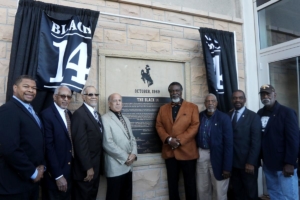
Black 14 return to War Memorial Stadium to be honored, UW issues formal apology. (Casper Star-Tribune)
(Casper Star-Tribune) Since Oct. 17, 1969 — the day 14 black football players were dismissed from the University of Wyoming’s football team for wanting to protest racial injustice — no one has publicly apologized on behalf of the school for the incident that altered the lives of a group more commonly known as the Black 14.
That changed Friday night.
The Black 14 received a formal apology from the university during a dinner in the Wildcatter Stadium Club and Suites at War Memorial Stadium. Eight of the 11 living members are back on Wyoming’s campus as part of a weeklong 50th-year commemoration of the event ahead of the Cowboys’ game Saturday against Idaho, where the group will be honored at halftime.
A plaque on the southeast side of War Memorial Stadium honoring the Black 14 was unveiled Friday afternoon. But the most substantial part of the recognition for the members may have happened Friday night when Wyoming athletic director Tom Burman read a letter to the group that he and former UW President Laurie Nichols signed. (more)
TIPHC Bookshelf
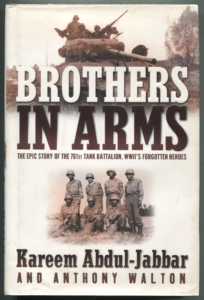 Published scholarship on black history in Texas is growing and we’d like to share with you some suggested readings, both current and past, from some of the preeminent history scholars in Texas and beyond. We invite you to take a look at our bookshelf page – including a featured selection – and check back as the list grows. A different selection will be featured each week. We welcome suggestions and reviews. This week, we offer, “Brothers in Arms, The Epic Story of the 761st Tank Battalion, WWII’s Forgotten Heroes,” by Kareem Abdul-Jabbar and Anthony Walton.
Published scholarship on black history in Texas is growing and we’d like to share with you some suggested readings, both current and past, from some of the preeminent history scholars in Texas and beyond. We invite you to take a look at our bookshelf page – including a featured selection – and check back as the list grows. A different selection will be featured each week. We welcome suggestions and reviews. This week, we offer, “Brothers in Arms, The Epic Story of the 761st Tank Battalion, WWII’s Forgotten Heroes,” by Kareem Abdul-Jabbar and Anthony Walton.
A powerful wartime saga in the bestselling tradition of “Flags of Our Fathers,” “Brothers In Arms” recounts the extraordinary story of the 761st “Black Panthers” who trained at Fort Hood in Killeen, Texas and became the first all-black armored unit to see combat in World War II.
Kareem Abdul-Jabbar first learned about the battalion from family friend Leonard “Smitty” Smith, a veteran of the battalion. Working with acclaimed writer Anthony Walton, Abdul-Jabbar interviewed the surviving members of the battalion and their descendants to weave together a page-turning narrative based on their memories and stories, from basic training through the horrors on the battlefield to their postwar experiences in a racially divided America.
Trained essentially as a public relations gesture to maintain the support of the black community for the war, the battalion was never intended to see battle. In fact, General Patton originally opposed their deployment, claiming African Americans couldn’t think quickly enough to operate tanks in combat conditions. But the Allies were so desperate for trained tank personnel in the summer of 1944, following heavy casualties in the fields of France, that the battalion was called up.
While most combat troops fought on the front for a week or two before being rotated back, the men of the 761st served for more than six months, fighting heroically under Patton’s Third Army at the Battle of the Bulge and in the Allies’ final drive across France and Germany. Despite a casualty rate that approached 50 percent and an extreme shortage of personnel and equipment, the 761st would ultimately help liberate some thirty towns and villages, as well as the Gunskirchen Lager concentration camp.
The racism that shadowed them during the war and the prejudice they faced upon their return home is an indelible part of their story. What shines through most of all, however, are the lasting bonds that united them as soldiers and brothers, the bravery they exhibited on the battlefield, and the quiet dignity and patriotism that defined their lives.
This Week in Texas Black History
Sept. 15
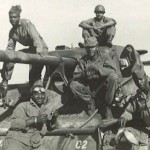 The 761st Tank Battalion arrived at Camp Hood in Killeen on this day in 1943 to begin advanced training for duty in World War II. Known as the “Black Panthers,” the 761st would become the Army’s first all-black tank unit and they served with valor. However, the widely held belief in Washington, D.C. about using blacks in combat roles, especially in armored units, was as one officer observed, “As fighting troops, the Negro must be rated as second-class material, this primarily to his inferior intelligence and lack of mental and moral qualities.” Early on, Gen. George S. Patton had agreed with that sentiment, saying, “A colored soldier cannot think fast enough to fight in armor.” Yet, when he needed armored reinforcements for his Third Army, he got the 761st, which he had seen training at Camp Hood. Upon their arrival in Europe, he addressed the men and told them, “I would never have asked for you if you weren’t good. I have nothing but the best in my Army. I don’t care what color you are as long as you go up there and kill those Kraut sons of bitches. Everyone has their eyes on you and is expecting great things from you. Most of all your race is looking forward to you. Don’t let them down and damn you, don’t let me down!’ The 761st was involved in combat for 183 straight days, including action in the Battle of the Bulge. The unit received the Presidential Unit Citation and one of its members, Staff Sgt. Ruben Rivers, posthumously received the Congressional Medal of Honor. The tankers also participated in the liberation of Gunskirchen, a subcamp of the Mauthausen concentration camp, in May 1945.
The 761st Tank Battalion arrived at Camp Hood in Killeen on this day in 1943 to begin advanced training for duty in World War II. Known as the “Black Panthers,” the 761st would become the Army’s first all-black tank unit and they served with valor. However, the widely held belief in Washington, D.C. about using blacks in combat roles, especially in armored units, was as one officer observed, “As fighting troops, the Negro must be rated as second-class material, this primarily to his inferior intelligence and lack of mental and moral qualities.” Early on, Gen. George S. Patton had agreed with that sentiment, saying, “A colored soldier cannot think fast enough to fight in armor.” Yet, when he needed armored reinforcements for his Third Army, he got the 761st, which he had seen training at Camp Hood. Upon their arrival in Europe, he addressed the men and told them, “I would never have asked for you if you weren’t good. I have nothing but the best in my Army. I don’t care what color you are as long as you go up there and kill those Kraut sons of bitches. Everyone has their eyes on you and is expecting great things from you. Most of all your race is looking forward to you. Don’t let them down and damn you, don’t let me down!’ The 761st was involved in combat for 183 straight days, including action in the Battle of the Bulge. The unit received the Presidential Unit Citation and one of its members, Staff Sgt. Ruben Rivers, posthumously received the Congressional Medal of Honor. The tankers also participated in the liberation of Gunskirchen, a subcamp of the Mauthausen concentration camp, in May 1945.
Sept. 17
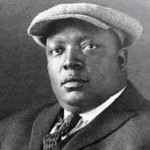 Rube Foster, known as the “Father of Black Baseball,” was born on this day in 1879 in Calvert. Foster was a pitcher (right-handed), manager, and team owner who started his career at age 18 with the semi-pro Waco Yellow Jackets. In 1920, Foster led the founding of baseball’s first successful all-black league, the Negro National League, headquartered in Kansas City, Mo. Foster was league president, as well as manager and pitcher for the powerful Chicago American Giants. The NNL had teams in the South and Midwest. Some of the Texas teams affiliated with the NNL and other all-black baseball associations were: Austin Black Senators, Fort Worth Black Panthers, Houston Eagles, San Antonio Black Bronchos, San Antonio Black Indians. Foster was elected to the Baseball Hall of Fame in 1981.
Rube Foster, known as the “Father of Black Baseball,” was born on this day in 1879 in Calvert. Foster was a pitcher (right-handed), manager, and team owner who started his career at age 18 with the semi-pro Waco Yellow Jackets. In 1920, Foster led the founding of baseball’s first successful all-black league, the Negro National League, headquartered in Kansas City, Mo. Foster was league president, as well as manager and pitcher for the powerful Chicago American Giants. The NNL had teams in the South and Midwest. Some of the Texas teams affiliated with the NNL and other all-black baseball associations were: Austin Black Senators, Fort Worth Black Panthers, Houston Eagles, San Antonio Black Bronchos, San Antonio Black Indians. Foster was elected to the Baseball Hall of Fame in 1981.
Sept. 18
On this day in 1899, a copyright was registered for Scott Joplin‘s “Maple Leaf Rag.” The Texarkana native’s ragtime composition for piano is his best known piece. More than a million copies of the tune’s sheet music was sold encouraging the publication of hundreds of similar pieces as a ragtime craze swept the country. Joplin’s piece was the genre’s biggest hit and became the model for ragtime compositions. The name of the tune was derived from the Sedalia, Mo. social club, the Maple Leaf, where Joplin played. The piece gave Joplin a steady if unspectacular income for the rest of his life. Listen to the song here.
Sept. 19
Former Dallas Texans and Kansas City Chiefs running back Abner Haynes was born on this day in 1937 in Denton. In 1956, Haynes and Leon King became the first African-American student athletes at North Texas State College (now North Texas State University). In 1960, Haynes, a graduate of Dallas Lincoln High School, joined the Texans in the first season for the American Football League and led the league in rushing attempts, yards, and TDs in its first year and was the league’s first Player of the Year and Rookie of the Year. Haynes had an eight-year career and still owns several Chiefs’ franchise records. His 12,065 combined yards is the AFL record.
Sept. 19
On this day in 1943, baseball player Joe Morgan was born in Bonham. A second baseman, Morgan grew up in Oakland, Calif. In 22 seasons in Major League Baseball, Morgan had 2,517 hits, 268 home runs, 1,133 RBIs, 1,650 runs, 689 stolen bases, and a .271 batting average. His 266 home runs as a second baseman broke Rogers Hornsby‘s record for most home runs by a player at that position. In 1965, Morgan’s first full season in the majors, he was named the NL Rookie of the Year for the Houston Astros; he hit 14 home runs, scored 100 runs, and had a .271 batting average. With the Cincinnati Reds, Morgan made the All-Star team during each of his eight seasons and received five Gold Gloves for fielding excellence. He was NL MVP in 1975 and 1976 when he led the Reds to back-to-back World Series championships. He was elected to the Baseball Hall of Fame in 1990.
Blog: Ron Goodwin, Ph.D., author, PVAMU history professor
Ron Goodwin is an assistant professor of history at Prairie View A&M University. Even though he was a military “brat,” he still considers San Antonio home. Like his father and brother, Ron joined the U.S. Air Force and while enlisted received his undergraduate degree from Texas Lutheran University in Seguin, Texas. After his honorable discharge, he completed graduate degrees from Texas Southern University. Goodwin’s book, Blacks in Houston, is a pictorial history of Houston’s black community. His most recent book, Remembering the Days of Sorrow, examines the institution of slavery in Texas from the perspective of the New Deal’s Slave Narratives.
Recent Posts
We owe them reverence
Given the infinite nature of the Universe, four hundred years is merely a blink of the eye. But the human existence is not infinite. We understand that from the moment we take our first breath out of our mothers’ wombs, our journey begins towards that moment when we take our last breath. So, for us whose existence is finite, we consider four hundred years a mighty long time. We really know very little about those…(more)
The beginning of the end: D-Day
In June 1944, Allied forces began their assault not only on the beaches of Normandy, but on Nazism itself. Dubbed Operation Overlord, the amphibious exercise is legendary as the extraction of France from German control and the beginning of the end of Adolph Hitler’s plans for a thousand year reign of his Aryan master race. The death tolls were staggering on the initial day of the operation. Thousands of Americans gave the greatest sacrifice in…(more)
Submissions wanted
Historians, scholars, students, lend us your…writings. Help us produce the most comprehensive documentation ever undertaken for the African American experience in Texas. We encourage you to contribute items about people, places, events, issues, politics/legislation, sports, entertainment, religion, etc., as general entries or essays. Our documentation is wide-ranging and diverse, and you may research and write about the subject of your interest or, to start, please consult our list of suggested biographical entries and see submission guidelines. However, all topics must be approved by TIPHC editors before beginning your research/writing.
We welcome your questions or comments. Please contact Michael Hurd, Director of TIPHC, at mdhurd@pvamu.edu.


